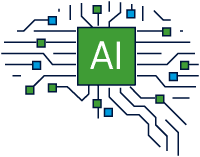AUTHORS
Embracing Web 3.0: Transformative Strategies for Future-Ready Businesses
Businesses are constantly seeking new ways to innovate and stay competitive.
The rise of Web 3.0 brings a host of revolutionary tools that promise to reshape business strategies, enhance customer engagement and improve data security. Dr. Ian Tho, RSM’s expert in Advanced Analytics and Data Science, shares his insights on how Web 3.0 technologies—like blockchain, decentralisation, tokenisation AI and machine learning —are set to transform the future of business.
What exactly is Web 3.0?
To understand the impact of Web 3.0, it helps to look at the evolution of the internet itself. “We started with Web 1.0; the early dial-up days, and then moved to Web 2.0, which was characterised by social media and cloud storage, but with centralised control and limited privacy,” Dr. Tho explains.
“Now, Web 3.0 shifts towards a decentralised web that’s faster, more secure, and enables true ownership of digital assets.”
With Web 3.0, businesses can leverage blockchain technology for enhanced privacy, cryptography for secure transactions, and decentralised networks to reduce data storage costs and risks.
Data security and decentralisation: A new era for business
One of the biggest advantages Web 3.0 offers is improved data security. Blockchain and cryptographic tools ensure that data is stored securely, with each transaction or piece of data verified across a network of nodes. This decentralisation greatly reduces the risk of data breaches and unauthorised access.
Dr. Tho highlights the significance of these advancements: “Web 3.0 allows businesses to secure data in a way that’s nearly impossible to tamper with. Decentralised storage means that there’s no single point of failure—data is stored across multiple locations, ensuring
resilience and privacy.”
Tokenisation and new revenue streams
Web 3.0 opens up the possibility of tokenising assets, which means turning tangible or intangible assets—like loyalty points, real estate, or even digital art—into tradable tokens on a blockchain. This offers new opportunities for businesses to engage with customers and unlock revenue streams.
“One example is tokenised loyalty programs,” Dr. Tho explains.
“Imagine a restaurant where loyalty points are issued as tokens. Customers could trade or sell these tokens, adding flexibility and value to traditional loyalty systems. Tokenisation makes customer engagement more interactive, personalised and valuable.”
Dr. Tho notes that Web 3.0 also facilitates fractional ownership, where individuals can own a piece of high-value assets, like real estate, without purchasing the entire property. This approach broadens access to investments and creates new ways for businesses to monetise their offerings.
Enhanced customer experience through AI and machine learning
Artificial Intelligence (AI) and Machine Learning (ML) bring intelligence and personalisation to Web 3.0, enhancing user experiences. Dr. Tho’s work with AI tools has enabled companies to predict customer preferences and tailor services accordingly. By combining AI with Web 3.0, businesses can deliver highly personalised experiences, while blockchain ensures data integrity and privacy.
“For example, we’ve used AI to predict box office revenues by analysing movie characteristics and correlating them with audience preferences,” Dr. Tho says. “When integrated with Web 3.0, AI can make customer experiences richer and more secure, giving businesses a major competitive edge.”
Ethical and practical considerations
Web 3.0’s decentralisation and anonymity offer both opportunities and challenges. While these technologies enhance security, they also require responsible implementation. Dr. Tho highlights the need for businesses to approach Web 3.0 with an ethical mindset, especially when managing sensitive data or developing decentralised finance (DeFi) solutions.
“There’s always a risk of misuse with decentralisation,” Dr. Tho cautions. “Businesses need to ensure they’re using these tools in ways that protect their customers and uphold high ethical standards. This might mean adding layers of encryption and transparency to reinforce trust.”
Building resilient supply chains with Web 3.0
The supply chain is another area where Web 3.0 shines. By recording every step of a product’s journey on an immutable blockchain ledger, businesses can enhance transparency, reduce fraud, and build customer trust. Dr. Tho shares how blockchain applications are already in use to track products from origin to delivery, offering proof of authenticity and ensuring ethical sourcing.
“From verifying sustainable farming practices to preventing counterfeit products, Web 3.0 makes it possible to track items through the entire supply chain,” he says. “This level of visibility fosters trust and strengthens brand loyalty.”
Embracing the future with Web 3.0
Web 3.0, coupled with AI and ML, offers a powerful toolkit for businesses looking to future- proof their strategies. By adopting decentralised systems, exploring tokenisation, and enhancing customer experiences, businesses can stay ahead of the curve in an increasingly digital world.
For companies interested in harnessing Web 3.0’s potential, RSM’s Advanced Analytics and Data Science team is here to provide expert guidance.
Whether you’re looking to improve data security, develop personalised customer experiences, or unlock new revenue streams, our team, led by experts like Dr. Ian Tho, can help you navigate the transition to Web 3.0.
As the digital landscape evolves, the combination of Web 3.0 and AI is set to revolutionise business strategies, delivering both security and personalisation in ways never before possible. Embrace the future with RSM and transform your business with the tools of tomorrow.
FOR MORE INFORMATION
If you would like to learn more about the topics discussed in this article, please contact Dr Ian Tho.






